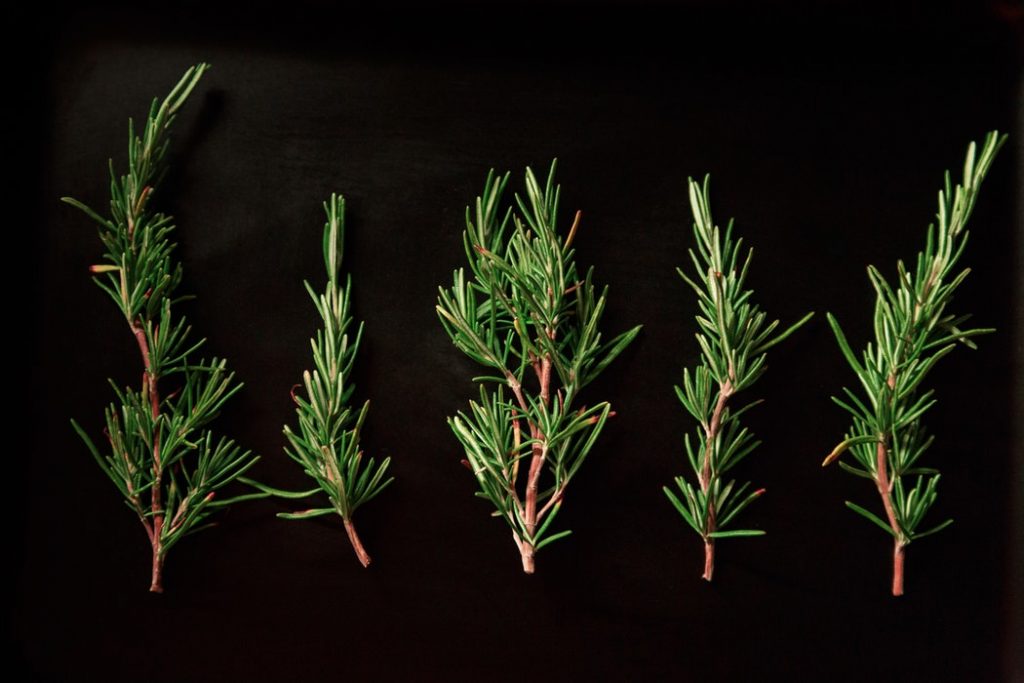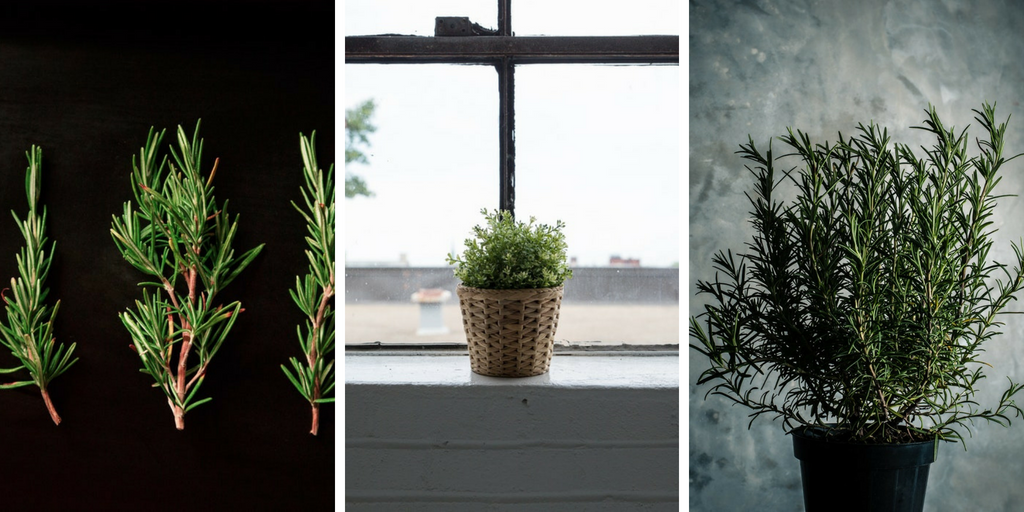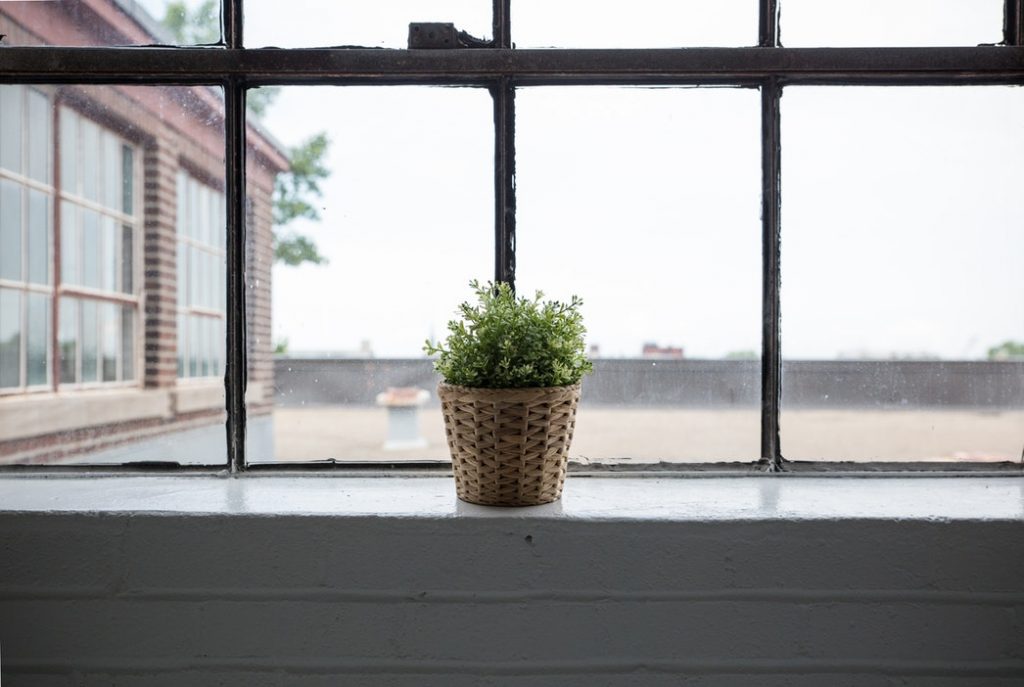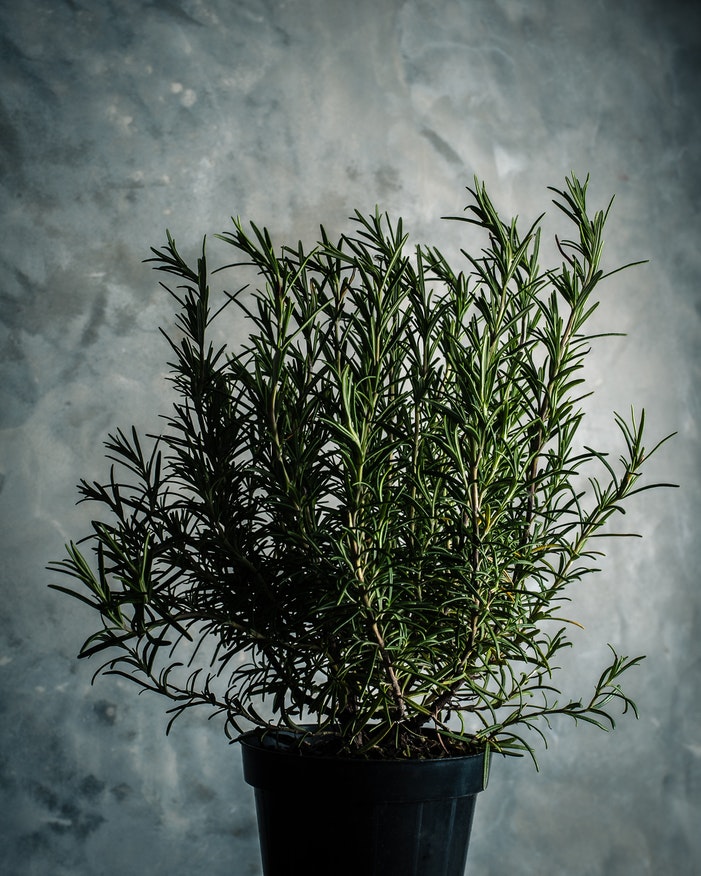Rosemary is a fabulous herb. It is distinguished by its sweet aromatic flavor. This fragrant evergreen herb is one of the most popular herbs to add to cooking. In fact, it is highly admired by professional chefs. Besides being cherished for its unique tasty flavor, rosemary is also cherished for its beautiful shape and color. This perennial can grow perfectly indoors. This article will provide you with detailed instructions for growing rosemary indoors successfully.
1. Propagating

Growing rosemary from seeds is difficult, tricky and does not yield the best results. However, propagating it from a mother plant is easy and effective. The first step in propagating rosemary is to buy a good quality healthy mother plant.
Once you bought a rosemary mother plant, leave the recently grown stems and remove the rest. You could distinguish which ones grew recently by their size. The smallest ones in size are usually the most recent grown ones. They have a great growth potential.
Afterward, cut off the bottom leaves from your seedling. It is better to use a scissor or a sharp knife to snip away the bottom leaves. Cutting them off with your hands may be harmful to your plant. Then, moist the seedling in a fresh water. Don’t soak it. Leave it in water until the substantial roots start to grow.
For better results, you could use a hormone rooting powder to boost the growth of the roots. Drench about 1/4 of the cutting into the powder. This will help the seedling to grow roots fast.
2. Choosing a container
Picking a container for rosemary is easy. You will need a container that is at least 3 inches in depth and diameter. Make sure to drill many drainage holes in your container to protect your herb from root rot. Since rosemary prefers well-draining soil, you should use a terra cotta pot rather than a plastic one. Terracotta Pots help the soil drains water fast. Thus, they shield your herb from overwatering.
3. Soil
Rosemary requires a good quality well-draining soil. You should never use soil from your garden as it may contain pests and diseases that could harm your herb. You could make an excellent good quality soil for rosemary by mixing two parts of potting soil with one part of perlite or sand. Pertile will promote a better drainage.
It is also advisable that you add some peat moss to the soil. It facilitates the growth of your plant and improves its yield.
4. Planting
Plant your cutting deep into the soil until the bare stem is fully covered. However, don’t bury the leaves in the soil. Once you plant the seedling, move the container to the sunniest window or spot in your house. Rosemary requires at least 6 hours of direct sunlight exposure daily.
If you cannot provide this lovely herb with adequate access to direct sunlight daily, you should seriously consider investing in grow lights. There are a lot of good grow lights that will replace the lack or the shortage of sunlight. Perhaps, fluorescent grow lights are the best to use with rosemary. Put your plant 6 inches below the grow lights and leave it there for 14 hours per day.
5. Watering
Rosemary is a drought tolerant herb, hence, watering it should be careful. Excessive watering is the best way to kill this herb. You should keep the soil slightly moist but not waterlogged. The best way to prevent overwatering that leads to root rot is to check the soil before you water your plant. Poke your finger one inch deep in the soil and if the soil is slightly dry water the plant, if it is not, don’t water it.
6. Humidity
For growing rosemary indoors successfully, you need to provide it with adequate humidity. This is not an issue during spring, autumn, and summer since these three seasons come with a sufficient humidity for rosemary. But, during winter, you may want to provide your herb with an extra humidity. You could use a humidity tray or a humidifier to adjust the humidity to meet the requirements of your rosemary
7. Fertilizing
Rosemary is not a heavy feeder and does not require much fertilizing. Nonetheless, you could feed your plant once or twice monthly by using a balanced fertilizer. Use the fertilizer according to the manufacturer’s instructions. For maximum yield, you should compost your rosemary every 1 to 3 years.
8. Pruning
Pruning rosemary is not compulsory but it is recommended. It allows you to maintain the beautiful shape of this herb. The rosemary grows big and its branches become heavy, thus, it is better to prune it once a year every spring after it flowers. This will contribute to its growth and beautiful shape.
9. Pests and diseases
Although rosemary is an extremely sturdy plant, there are few pests and diseases that could attack your herb. The most dangerous disease is powdery mildew. It is a fungal disease usually caused by the stagnation if the air. In order to avoid this disease, use a fan below your herb to improve air circulation. A good air circulation will decrease the risk of diseases.
Rosemary could be attacked by spider mites, mealy bugs, and scale. However, growing it indoors dramatically decrease the threat of these pests. In fact, growing plants indoors is one of the best ways to keep them away from pests. It is recommended that you use neem oil in case that your plants were infested. It is completely harmless to humans and pets, but deadly to pests.
10. Harvesting
You can pick the leaves off the stem whenever you want to. You should only keep in mind that you shouldn’t pick more than 1/3 of the plant at once because it will hinder its growth. You could use rosemary leaves while they are fresh or you could dry them out. Either way, they are extremely fragrant and aromatic. They will definitely make any cooking smells and tastes better.
Follow these steps for growing rosemary indoors and you will be able to enjoy this amazing herb for years. Once it grows, it does not easily die and it is easy to maintain. Rosemary is not the only healthy decorative herb to grow indoors. There are many useful herbs that you could grow indoors easily. You can find the best and the most decorative herbs to grow indoors in this selection.
Enjoy gardening



